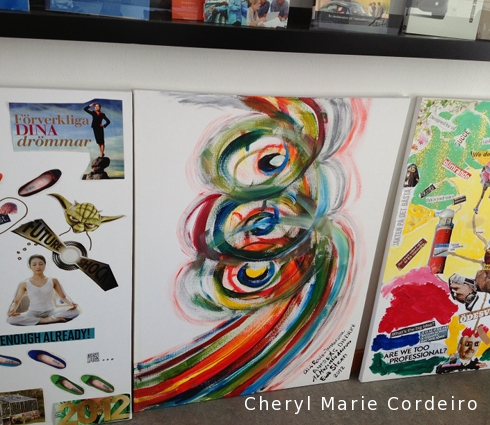
Art by colleagues of the Gothenburg Research Institute (GRI),
School of Business, Economics and Law, University of Gothenburg, Sweden.
Photo © CM Cordeiro 2013

Art by colleagues of the Gothenburg Research Institute (GRI),
School of Business, Economics and Law, University of Gothenburg, Sweden.
Photo © CM Cordeiro 2013
Secrets of Sourdough with Eduardo Morell.
Produced by KQED’s “Quest: Science on the SPOT”.
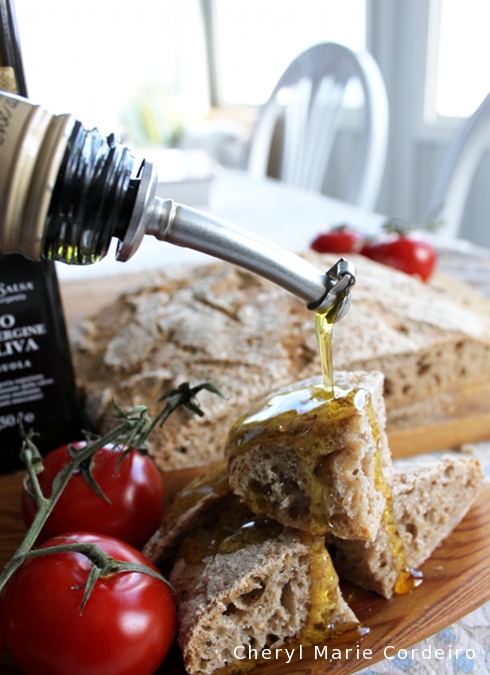
Sourdough bread served with olive oil and sea salt would be a classic combination of flavours, the bread simply sponging up the golden oil. Decadent.
Text & Photo © JE Nilsson, CM Cordeiro 2013
A few years ago, the concept of slow cooking began in Sweden as a general awareness raised in the context of too much pre-fabricated ingredients being used in the food and beverage industry. Today, the idea of slow cooking has developed more into a lifestyle philosophy here on the Swedish culinary scene, and at the heart of this all, is the secret to sourdough baking – it is an all natural process of fermentation of the bread, and it takes time, the standard time being three days to the baking of one batch.
Continue reading “Sourdough: naturally leavened bread” →
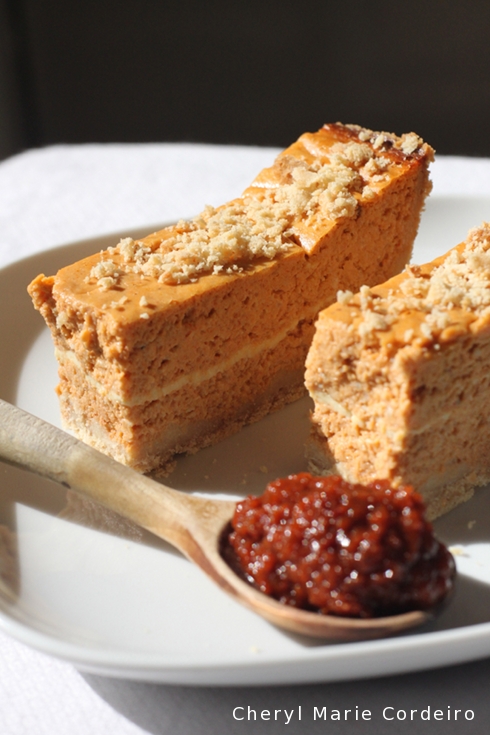
Seafood pâté made with cod and shrimp.
A variation of the Southeast-Asian otak otak that uses fresh lemongrass, red chillies, galangal and turmeric.
Photo & Text © JE Nilsson, CM Cordeiro 2013
Continue reading “Seafood pâté. A conversation behind this not quite otak otak.” →
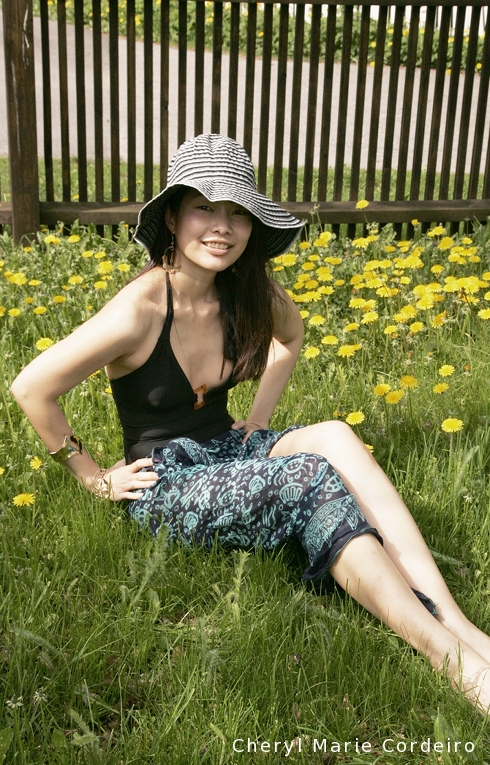
In weather that calls for a straw hat and a pareu,
by the dandelions, along the Swedish west coast.
Text © JE Nilsson, CM Cordeiro 2013
Summer and straw hat weather in Sweden arrived with express speed – if you blinked you missed the spring – and it is already time for outdoor activities such as a visit to the beach front, coupled with gardening and grass cutting.
One of my personal favourite sights in the garden is the slightly obnoxious and always seemingly happy dandelions. Considered weeds, however threatened they are to become one head shorter in the process of clipping and pruning, they continue to beam like small suns in the grass.
Continue reading “Straw hat weather in Sweden” →
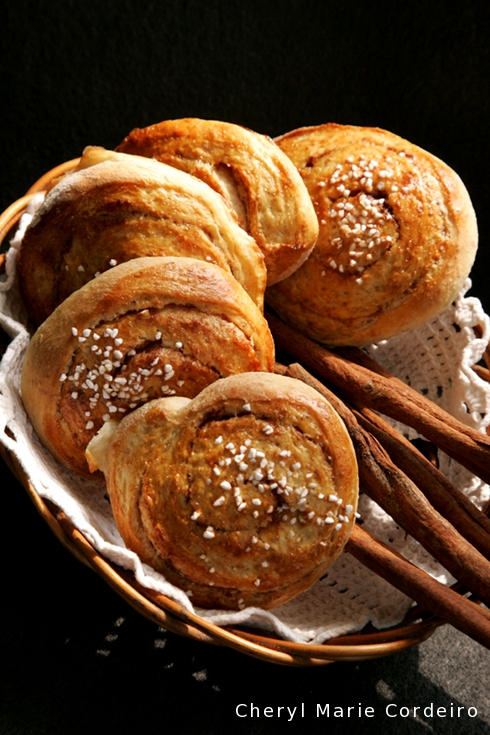
The weekend baking project. Swedish cinnamon rolls.
Text © JE Nilsson, CM Cordeiro 2013
Fast and easy to bake, these can can be filled and glazed with most anything you favour from crushed pecan in maple syrup to vanilla custard. Glaze with likewise as many of your heart’s culinary desires from cream cheese to Dulce de Leche.
Related:
A Swedish fika over cinnamon rolls
Kanelbullens Dag, Cinnamon Rolls Day 2009
Cinnamon Roll Day (Kanelbullens Dag) in Sweden, 2007
Cheryl Cordeiro and Alvin Tan with his art, at Phunk Studio’s Empire of Dreams exhibition, January 2013, Singapore. Phunk Studio is a gallery space that illustrates an integral perspective expressed through art.
Text and Photo © JE Nilsson, CM Cordeiro 2013
I’ve been reading Doriane L. Coleman (1996), Jürgen Habermas (1976) and Ken Wilber (2000), where I’m finding a lot of humour in Wilber’s writings in how he incorporates Habermas into his own philosophical reasoning, specifically talking of how some disciplines argue themselves lost into aperspectival space usually at higher levels of development within the individual, the organizational, national and transnational realms. More thoughtful and filled with much less humour is the article by Coleman on “cultural defense” and “the Liberals’ Dilemma”.
This article is an exploration in thought on the dialectic of progress, the nature of multiculturalism (and its consequences when used in court as a “cultural defense”) and aperspectival fallacy.
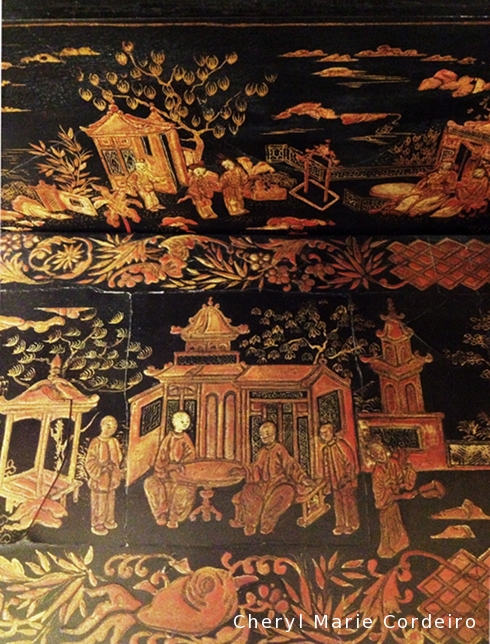
Carved details in the style of Rococo, on a Chinese gold on black lacquer cabinet purchased from China during the 1910s.
The cabinet is of the provenance, Family Sederholm.
Text & Photo © JE Nilsson, CM Cordeiro 2013

Spring, finally. Enjoying the first day of the year that is not freezing cold.
Text & Photo © JE Nilsson, CM Cordeiro 2013

From a late night’s adventure in baking – two different types of sourdough bread, from a kefir culture and a buttermilk culture.
Text & Photo © CM Cordeiro 2013
At this year’s Passion for Food Festival 2013 in Gothenburg, one of the talking points was about how homebaked sourdoughs are now coming back into fashion in Swedish households. Most people still lamented the time it took for a culture to start and rise, this being the primary reason why sourdoughs were abandoned for decades as a household project due to a lack of time.
So sourdoughs were not always favoured in breadbaking history, and I couldn’t help but laugh when I read in a well-regarded Swedish cookbook printed in the late 1990s that sourdough cultures were cumbersome to work with because they tended to die on you, not give enough raising strength to the dough or worse, produce bread with uneven holes in the texture. And to think, at this year’s food festival, I was so taken in by sourdough bread with exactly those large, uneven roles going through its entire structure that I thought I’d adopt a sourdough culture as a pet project to see how it works out.
It’s been a few months and the culture is alive and well, no fuss to it at all, contrary to how it is often written about in numerous cookbooks and websites. Just see that you have enough of the starter after a baking project, leave it out a few days and I can almost assure you, it’ll live. Yeast and bacteria are after all, quite resilient organisms.
I now in fact have two different sourdough cultures to experiment with to my heart’s delight, where as pets, they hardly take any time looking after at all.